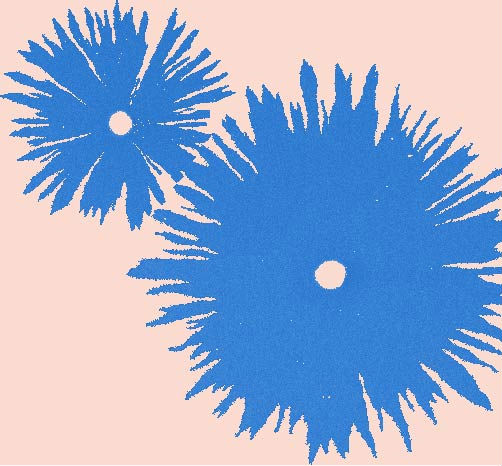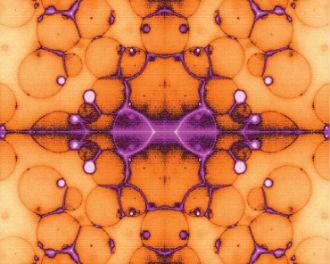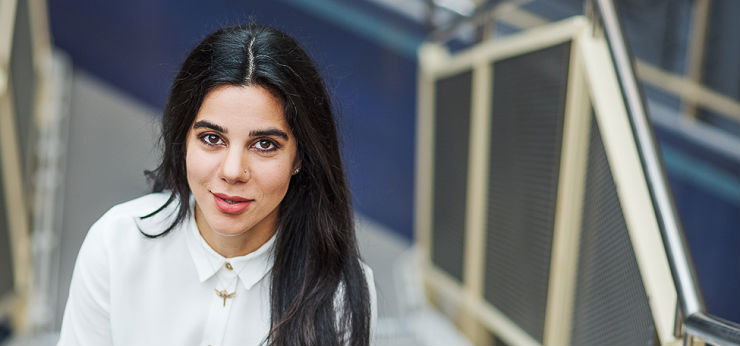What is your field of research?
– I am working on biological soft matter, particularly on biomembranes. Biomembranes surround the cells of all organisms, but they can also be synthesized and assembled artificially in a laboratory environment. They are very thin, squishy sheets mostly made out of lipids, but can contain sugars and proteins. In fact, they are molecularly thin and very flexible, but resist stretching strongly. The ideal material to surround cells and cellular compartments.
I am creating tiny containers from biomembranes in water and attach them to specially made surfaces, which I design to exploit and investigate their properties while observing them under a microscope. The aim is to simulate a biological cell, but without many of the components that are responsible for its functional complexity.
What are you working on at the moment?

– My group looks particularly into the dynamic properties of membranes, especially their response to certain cues. We expose them to different chemical environments, heat, electric fields or others, which are conditions which cells sense and respond to.
Even though these structures are not alive, but merely in vitro models of cells, we are able to observe that they still respond to these cues in ways very similar to living cells, forming arm like protrusions, reshaping, contracting, migrating and so on.
Uncovering the materials-related molecular mechanisms of these processes, and factors that influence them, are very important to get deeper insights into the communication and interactions of cells, which will help to get to the origins of disease, for example the reasons for aggressive invasion of healthy tissue by cancer cells.
What do you hope to find out with your research?
– I am trying to understand how much of cell behavior is driven by its genetically programmed machinery, and how much of that is occurring due to the rather smart exploitation of materials properties by the cell.
To explain this with an example: Let’s say you are swimming in the Mediterranean Sea. You control and move your muscles to swim so that you don’t sink. But the salinity of the sea water is quite high, and without actively moving, you would still float without consuming too much energy. Now, how much of the effort of staying afloat is governed actively by the person and how much of it driven by the beneficial materials properties, in this case the high salt contents, and associated physics, here the increased water density and buoyancy?
– In terms of cell behavior, I want to distinguish what is driven by cell’s internal regulation, for example signaling, versus fundamental materials properties.
Where do you think your field of research will be in ten years?
– Soft matter is at the interface of physics, biology and chemistry. Their interaction will become more prominent and important in scientific projects, and application development. I think particularly lipids and lipid structures are somewhat underappreciated, and will become very important within the next decade. Lipids as basic ingredients of membranes of all cells and organelles can provide important clues as biomarkers for various diseases that are otherwise difficult to detect.
We will hopefully know in 10 years enough to crack the century-old problem of the largely unknown molecular mechanisms of cancer development. Cellular sensing, interactions and migration will for sure play an important role.
What motivates you to do your research?
– The fact that very few people work on this particular problem motivates me. I am also motivated by the advanced technology I am using for my research. I am doing a lot of high resolution microscopy which gives me the chance to see the structures and their dynamic responses directly and in real time. Many of the structures, for example fractures in biomembranes, are really beautiful; I am a visual person and this is very appealing to me.
What would be your profession if you weren’t a scientist?
– I have always been very much into visual arts, especially drawing, painting and sculpting. I received a few prizes in national and international competitions back in school. I would probably work in an area related to art. Sometime in the future I want to develop an arts project combining scientific illustrations and microscopy.
Where do you find inspiration?

– I believe that ‘inspiration’ in its usually intended meaning is a rare event, at least for me. I don’t frequently go through phases where I experience this or that which then inspires me to come up with discoveries and inventions.
Research is challenging and in today’s academia it is often restricted by funders; which tends to push us away from the individual curiosity-driven research towards problems for which someone wants quick applicable solutions.
What keeps me stay in academic research, personally, are the people: other researchers I look up to. Scientists, who have depth in thinking beyond what is needed for high-impact papers. Particularly those who use out of the box thinking in science, develop their philosophy, and those who create a liberal and friendly atmosphere around them. I believe these are the people who are the most influential to me and make a difference in my and other people’s life directly or indirectly.
I have been very lucky for having worked and met with mentors or advisors with great skills, kindness and care. Those people gave me my inspirations.
What is your greatest achievement or moment in your career – in your opinion – so far?
– I received a research prize in 2011 for my "lab in a droplet", a tiny laboratory in a water droplet I developed for investigating biomembranes under the microscope. That was a great moment indeed, but I think every time a paper is published, it is a big achievement.
Projects require a lot of planning, time and effort, and interesting results often come after repeated failure and re-formulations. When this in the end becomes a publication, it means that a problem is solved, or new details have been discovered, and the findings are available to all people. That is each time very satisfying.
Who do you look up to in your research field?
– There are many people who influenced me. Too many to be named here, but I believe that I have described their common characteristics quite precisely earlier, when I talked about my inspirations.
Tell us something about yourself that would surprise your colleges?
– If I tell you now, I cannot surprise them myself!
